Construction in 2011 revealed the location of a ca. 1840 masonry cistern (tank for collecting rainwater) located behind the Call-Collins House. Excavations of the cistern, originally built by enslaved artisan brick masons at the same time as the house, revealed many artifacts illustrating daily life on the site as well as the skills of its builders.
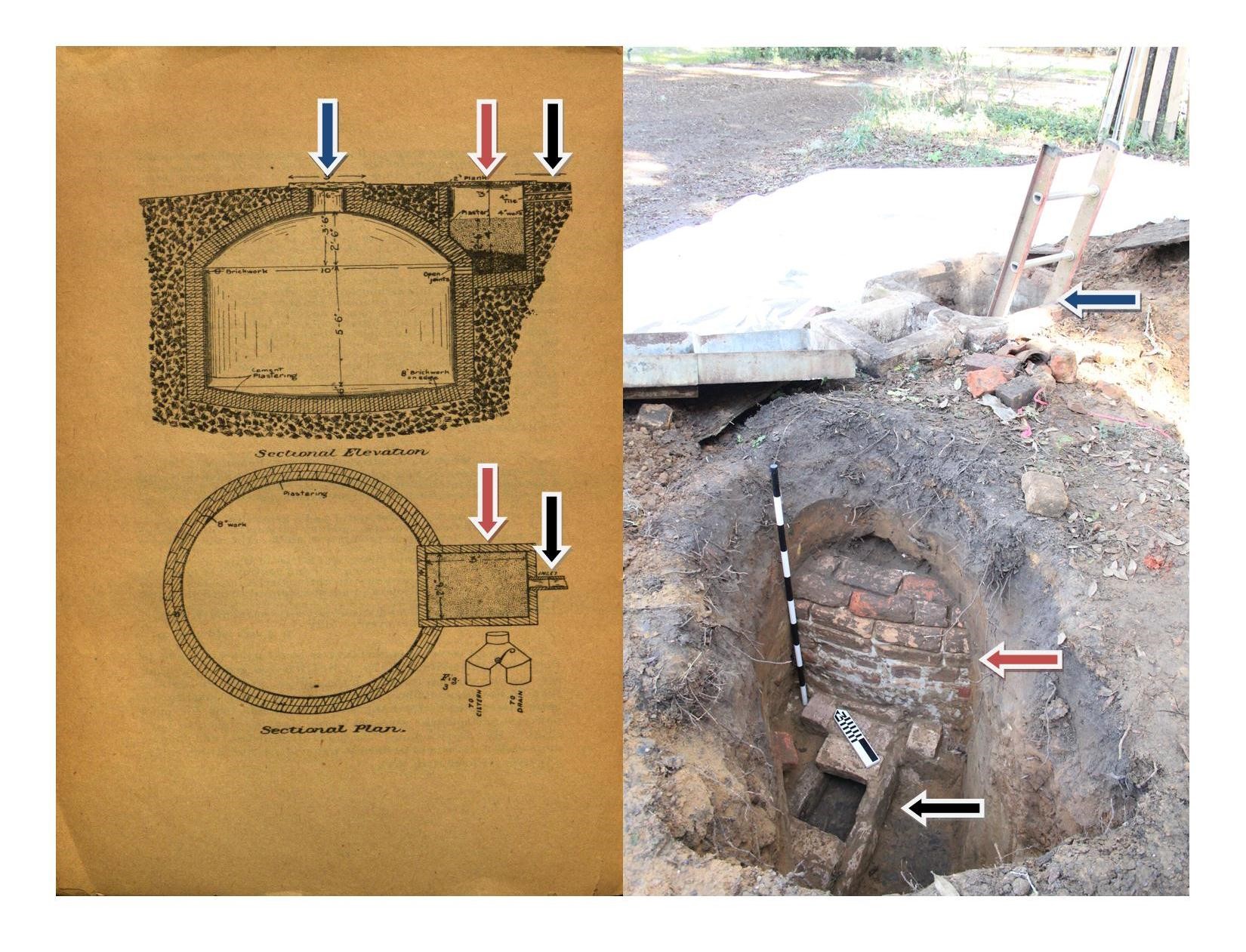
Left: diagram showing typical 19th-century masonry cistern design. Right: cistern at The Grove during excavation, 2011. The arrows on the left image correspond to features on the cistern at The Grove, which include brick trenches leading to the cistern from roof drainage (black arrow), the charcoal filtration box (red arrow), and access to the main tank from above (blue arrow). Images adapted from Rothrock, et al., The Grove Archaeological Report (on file at The Grove and the Florida Master Site File)
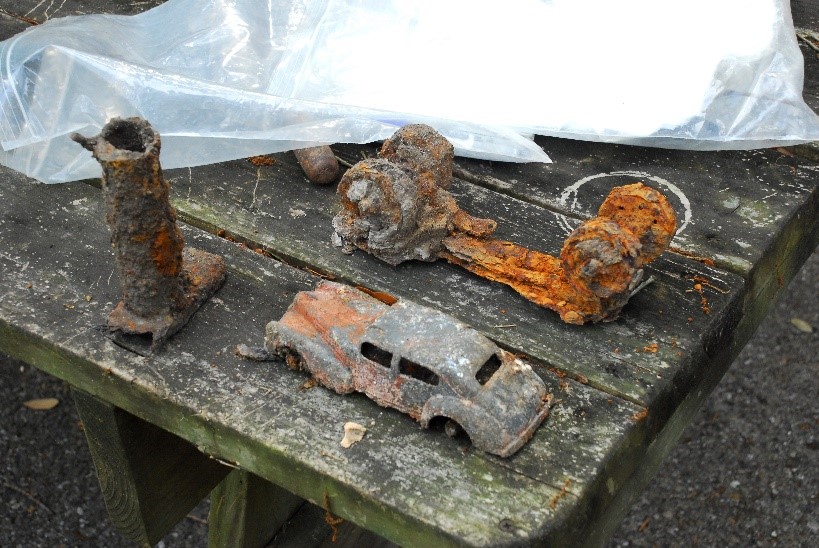
Artifacts found in the cistern at The Grove included several metal toys from the 1940s. Photo by Roy Lett, courtesy of the Florida Bureau of Archaeological Research
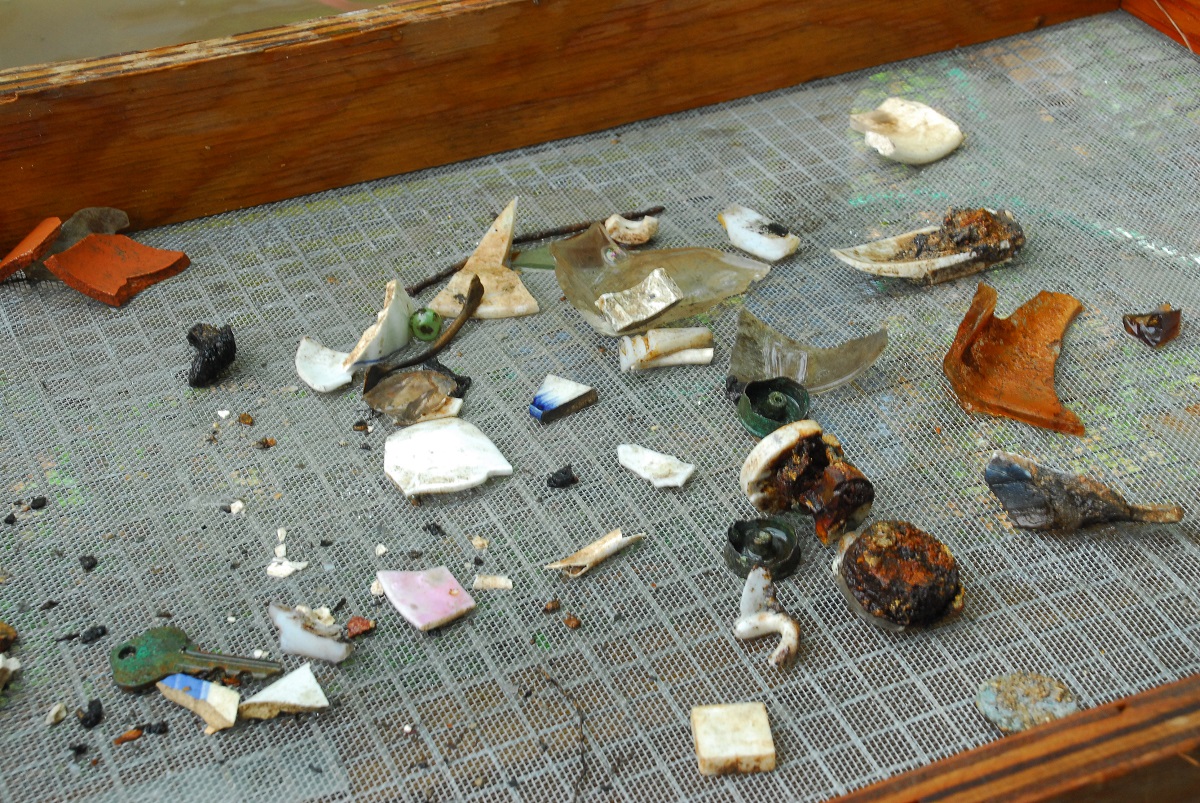
Other artifacts found in the historic cistern at The Grove included glass, ceramics, and metal fragments dating from the early 1800s to the 20th-century. Photo by Roy Lett, courtesy of the Florida Bureau of Archaeological Research
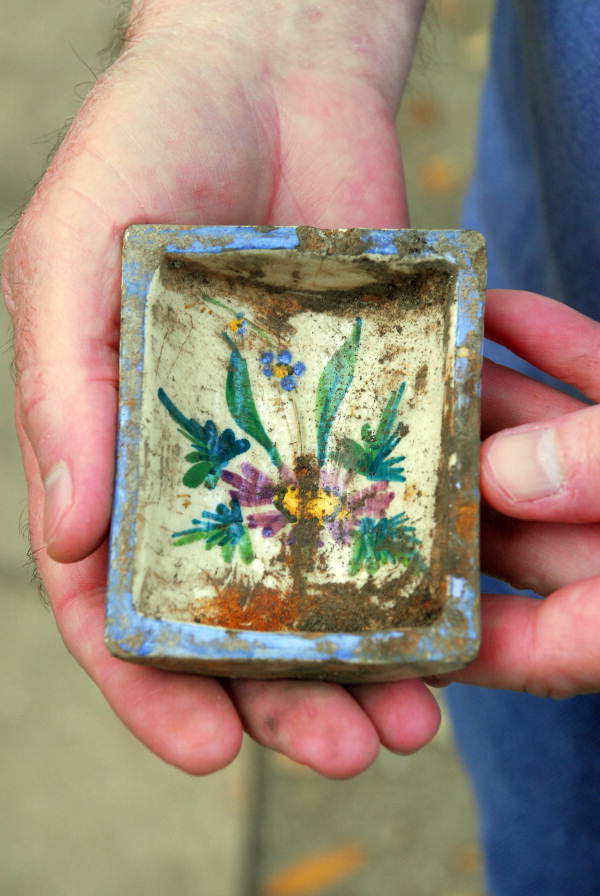
Archaeologists recovered few intact items from the cistern at The Grove. This small decorative dish is an exception and likely dates from the late 1800s or early 1900s. Photo by Roy Lett, courtesy of the Florida Bureau of Archaeological Research
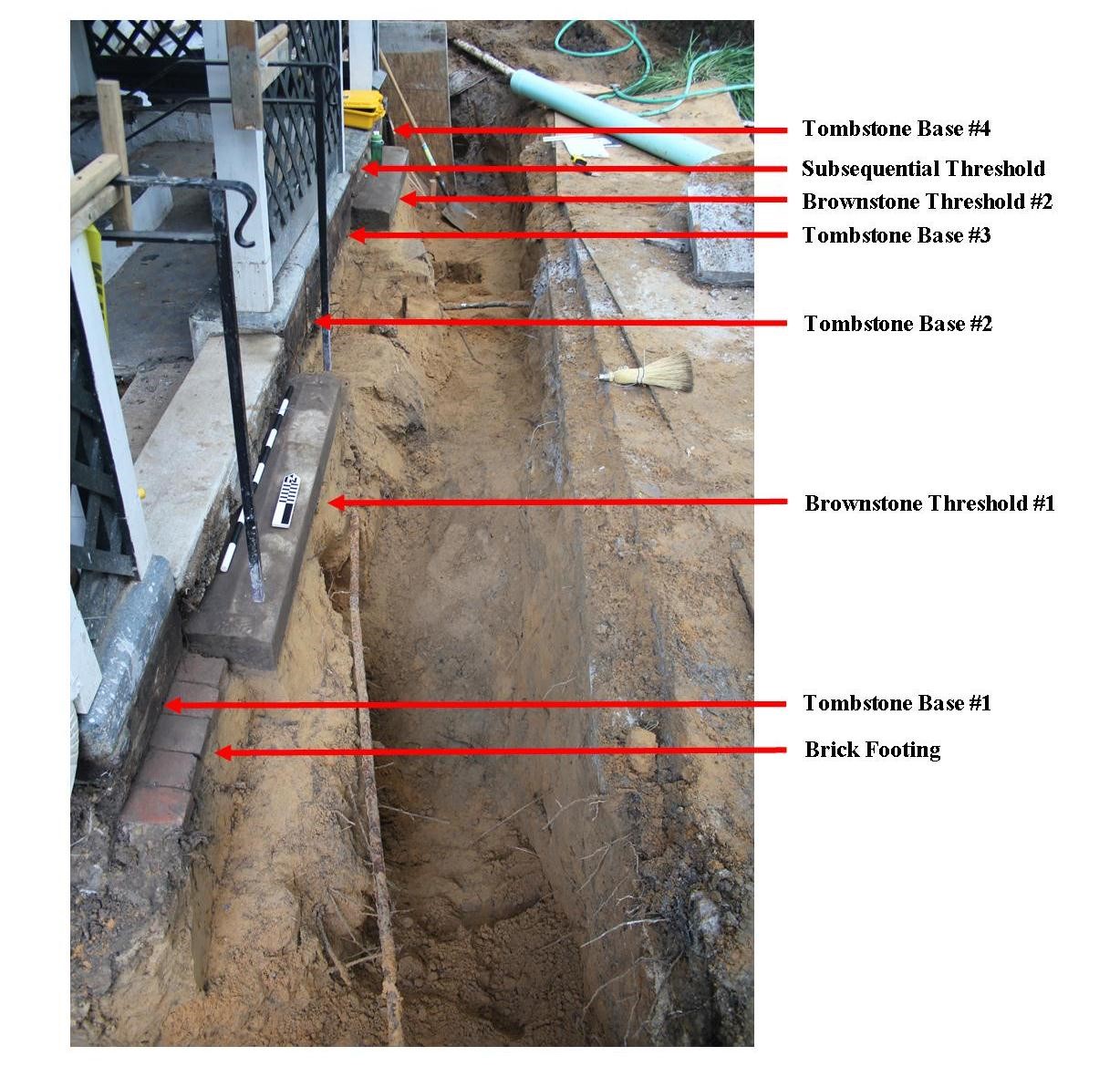
Through adaptive re-use, the historic cistern is now part of the modern irrigation system at The Grove. Roof drainage connects to the historic cistern and the collected water is then pumped into drip lines around the Call-Collins House. While installing outflow pipes for a reservoir, construction activities uncovered headstones used as part of the foundation for the covered entrances to the basement level of the house. In the 1940s, masons used the headstones, discarded because they contained mistakes, to support the wooden structure. Other architectural pieces salvaged from the house are also part of the entryway structure, including original brownstone window sills removed by Reinette Long Hunt when she added a bathroom addition on the east elevation of the Call-Collins House in the 1920s. Images adapted from Rothrock, et al., The Grove Archaeological Report
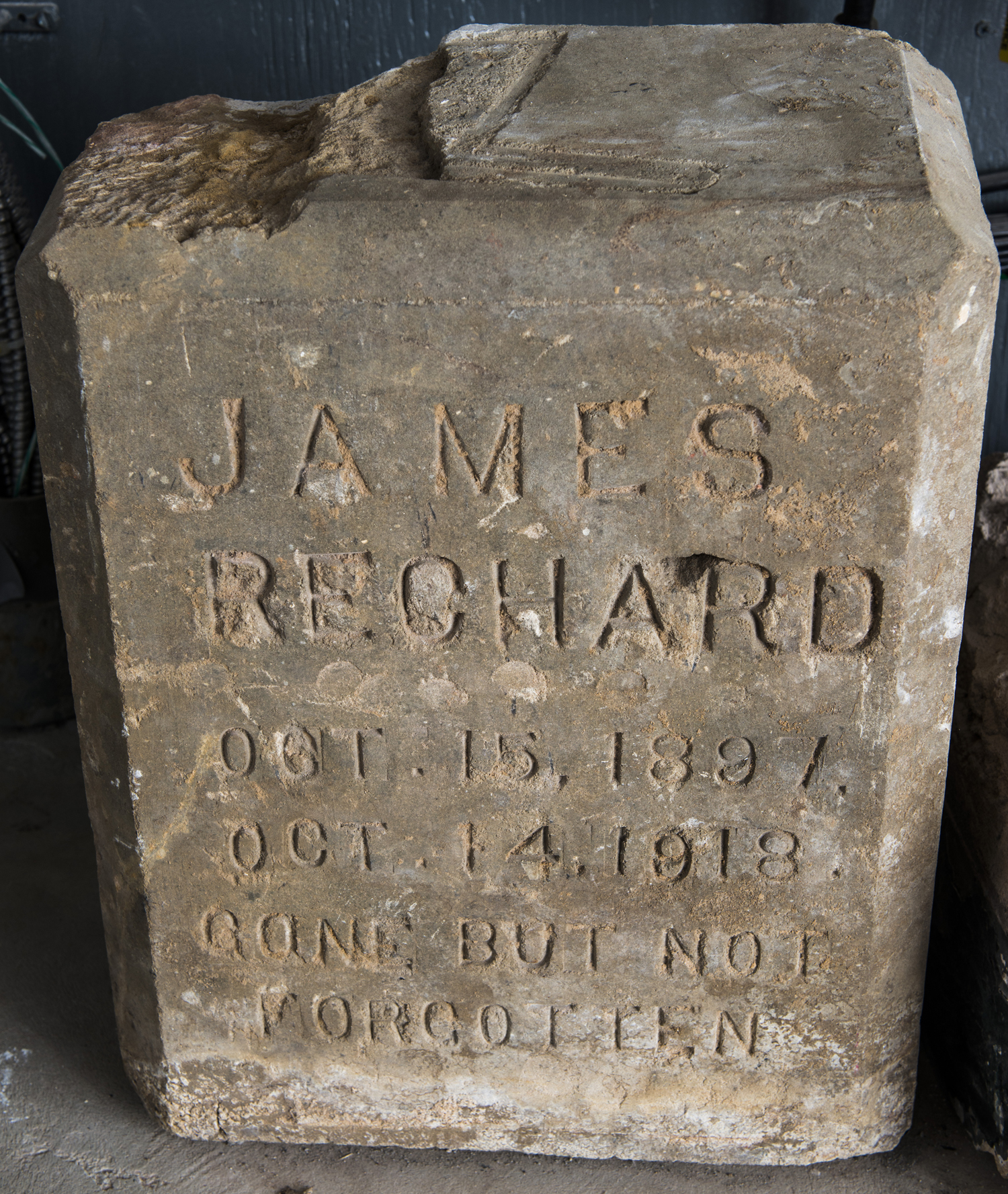
Headstone found under the covered entranceway to the basement level of the Call-Collins House. Research indicates that James Rechard was buried in East Grove Cemetery in Woodville, Florida. This salvaged headstone either contained a mistake, or was replaced with a newer one. Photo by Ray Stanyard
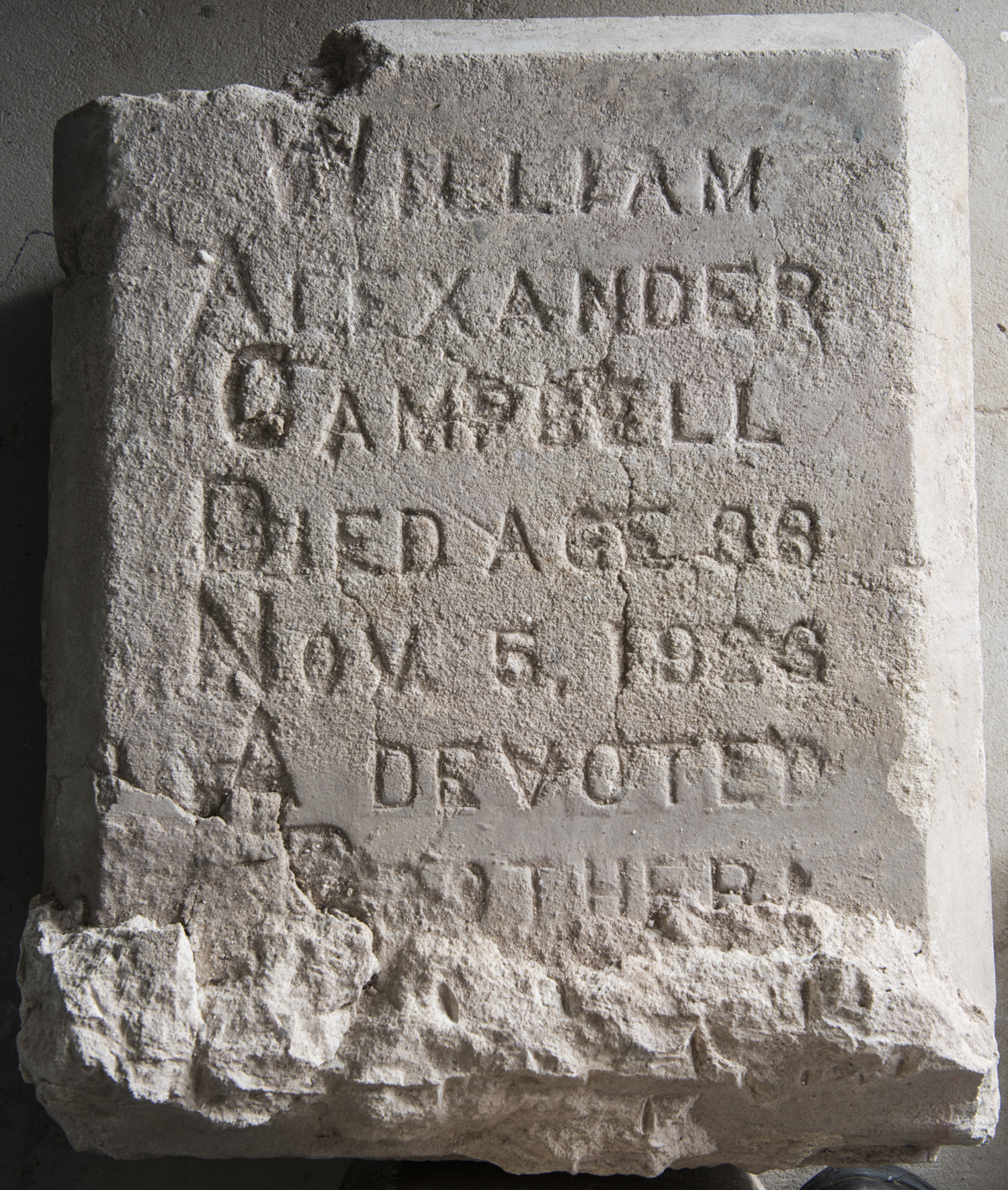
Headstone found under the covered entranceway to the basement level of the Call-Collins House. Research indicates that William Alexander Campbell was buried in Quincy, Florida. This salvaged headstone either contained a mistake, or was replaced with a newer one. Photo by Ray Stanyard
Visitor Parking:
902 N. Monroe Street, Tallahassee, FL 32303
House and Grounds
Wednesday - Saturday: House tours on the hour starting at 10 a.m. Last tour is at 3 p.m.
Closed Sunday, Monday, and Tuesday
Group Tours: Tours for groups of ten (10) or more are available at $1.00 per guest. For group tours, please contact the museum in advance to make arrangements.